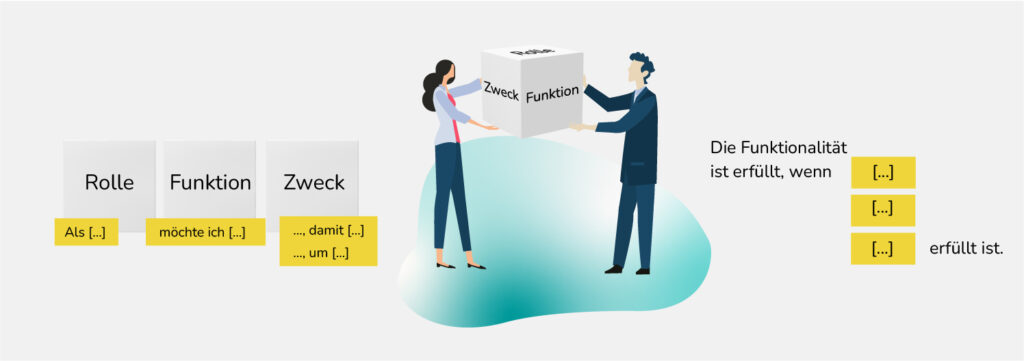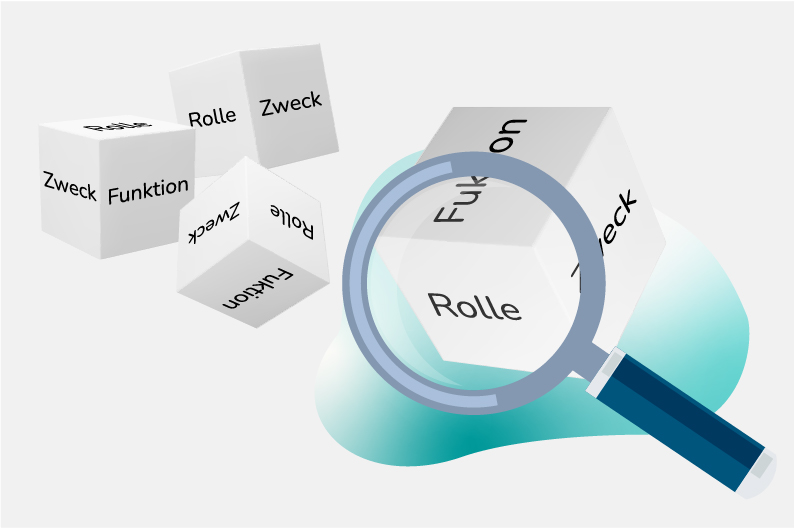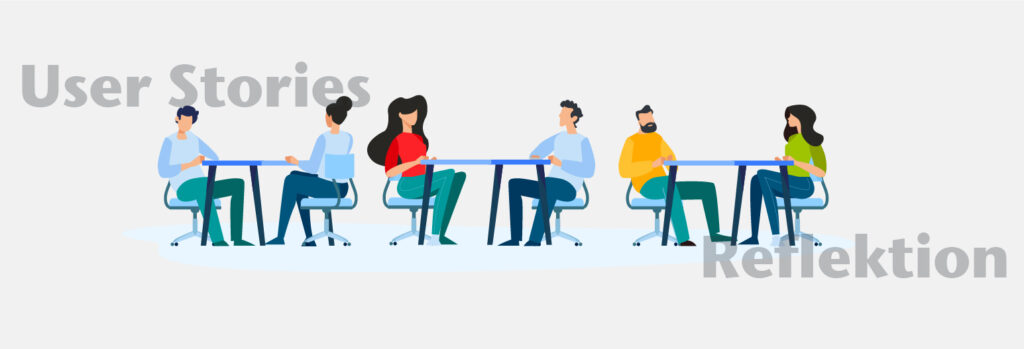
You know what you want in terms of content, but are faced with the challenge of defining the requirements for your new software in a comprehensible manner? You are supposed to write well-formulated user stories with measurable acceptance criteria and the development should still be agile? If you don't know what is required of you: We will support you! But even if you are already well versed in requirements management, this blog post will give you an insight into the creation of clearly formulated user stories.
Table of contents
From the idea to the requirements collection
The time has finally come: the starting signal for the development of a new software solution has been given. Together in the project team, you will develop your ideas for your solution.
In a large number of requirements gathering workshops, we have seen that it is often difficult for specialist departments to formulate requirements for the development team in a high-quality manner that is usable for an agile software project. Specialists are usually working on a much deeper level in terms of content and, due to the overall complexity of the new application to be developed, are often faced with the challenge of breaking down their requirements into small, measurable packages.
As a first step, it is possible to collect ideas for the software solution using creative methods or to capture them using a work process that may already exist.
Depending on the individual project situation, initial rudimentary mockups (wireframes) can be created together in this early phase. You can find out more about the advantages and creation of mockups in our blog post.
CONET is happy to support you with requirements management!
We design, develop and test a requirements management system tailored to your needs together with you. Take advantage of the experience of the CONET specialists from numerous projects and our many years of experience in requirements management.
Get more information
The need for clearly formulated requirements
The requirements collected through creative methods usually do not yet have the character of a user story.
You might be thinking: Can't I just list all the functions? Why should I write them down? Everyone knows that. This functionality is standard in every application, why do I have to name it? Oh, we can discuss the details later.
However, it is essential for the development team that the requirements are formulated comprehensively, measurably and understandably. Therefore, they ask you to describe your requirements in the form of a user story. This gives the developer the opportunity to select the most efficient way to implement your requirement from a variety of technical solutions.
Provide a framework for requirements through user stories
But what exactly is a user story?
A user story is a tool for describing a desired functionality of a system from the user's perspective. A sentence template with the keywords role, functionality and purpose is used for this. These are specified by acceptance criteria and form the basis for the later functionality test of the requirement.

Writing user stories
Perhaps one or another member of your project team has already dealt with the topic of user stories and formulated initial requirements using the sentence template.
And yet, after the handover to the development team, a large number of queries came in.
- You write about “data” in your user story: What data do you mean?
- “Faster”? Faster than what?
- Isn't this acceptance criterion just another requirement? Do we need a new user story?
Questions from the development team are good and important, but by formulating user stories in a targeted manner, communication between the project and development teams can be made much easier.
We have found it useful to first introduce the project participants to writing high-quality user stories using a playful approach in a workshop.
Learn practice in a workshop setting
In the workshops, we place particular emphasis on enabling participants to look at the collected requirements from different perspectives.

After the more playful imparting of the basic knowledge of creating user stories, the workshops are about converting the requirements collected using creative methods into tangible and concrete user stories and critically questioning them in small group exercises. The groups reflect on each other so that independent learning is guaranteed. The exercises are designed so that the project team becomes more and more confident in dealing with the formulation of requirements over the course of the workshops. This significantly reduces the time required for each user story created and also increases the quality.

You are now able to quickly generate a large number of clearly formulated user stories that describe the functionalities of your desired software solution.
But what happens next with the many user stories? So that you don't lose track and are well positioned methodically and technically, we recommend our blog post.
outlook
We hope that our explanations have given you an initial insight into how we can support you from the idea generation of your software solution to the independent formulation of requirements in the form of user stories. We would be happy to help you design and conduct your individual workshop, in which we will contribute our years of experience and expertise. Do not hesitate to contact us!
CONET is happy to support you with requirements management!
We design, develop and test a requirements management system tailored to your needs together with you. Take advantage of the experience of the CONET specialists from numerous projects and our many years of experience in requirements management.
Get more information
Source: https://www.conet.de/blog/effektive-anwendungsentwicklung-durch-user-stories-agiles-vorgehen-fuer-kundenorientierte-loesungen/




